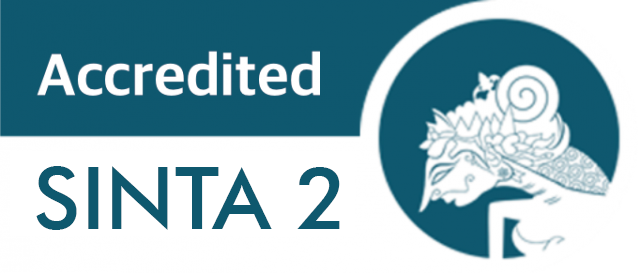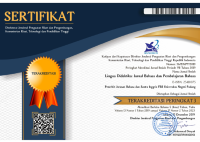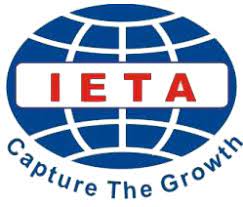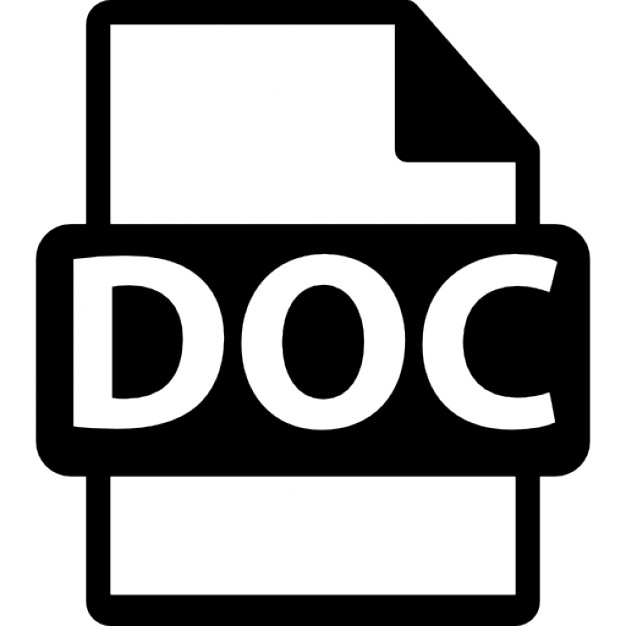INTERNET-BASED ACTIVITIES IN DEVELOPING STUDENTS’ ENGLISH SKILLS
 ),
), (1) English Department of FBS Universitas Negeri Padang
 Corresponding Author
Corresponding Author
Copyright (c) 2017 Lingua Didaktika: Jurnal Bahasa dan Pembelajaran Bahasa
DOI : https://doi.org/10.24036/ld.v6i1.7397
Full Text:
 Language : en
Language : en
Abstract
The development of Information Technology (IT) challenges the teacher to use the facility to create interesting and motivating activities in learning English. This article explores how the teachers can use various materials and facilities supported by the new IT to support their students in learning English and to practice their English in authentic environment. The activities incorporate internet-based activities as media to practice integrated-skills in the foreign language. The study seeks to determine the usefulness of using email, blogs, and facebook as current communication media that are available in the internet to facilitate students in learning English both inside and outside the classroom.
Keywords
References
Beaty, Ken. 2003. Teaching and Researching Computer-assisted Language Learning. London: Pearson Education Ltd.
Bihr, Peter & Praus, Thomas. 2008. “Facebook for teaching and learning” retrieved June 10, 2009. from http://innovauoc.org/foruminnovacio/en/2008/10/facebook-for-teaching-and-learning.
Blin, F. 1999. “CALL and the Development of Learner Autonomy.” In R. Debski & M. Levy (Eds.), World CALL: Global Perspectives on Computer Assisted Language Learning (pp. 133-148). Lisse: Swets & Zeitlinger.
Brett, Tony. 2009. “Facebook for learning and collaboration: engage your students or colleagues” (PowerPoint). Retrieved June 27, 2009. From http://users.ox.ac.uk/~tony/facebook.ppt.
Childs, Elaine 2009. “Using Facebook as a Teaching Tool.” Retrieved June 27, 2009 from http://praxis.technorhetoric.net/index.php/Using_Facebook_as_a
_Teaching_Tool
Davies, Graham. 2007. “CALL (computer assisted language learning) Guide to Good Practice 3.” Retrieved December 5, 2007 from http://www.llas.ac.uk/resources/goodpractice.aspx?resourceid=61.
Intan Safinas Mohd Ariff AlBakri, Siti Hamin Stapa & Rosseni Din. 2003. “Using e-Mail Dialogue Journal Writing in ESL Classroom: A Case Study.” in VirTEC Journal. Volume 3 Number 1.
Krish, Pramela. 2008. “Language Learning in the Virtual World: Instructors’ Voices.” In International Journal of Pedagogies and Learning, 4(4), pp. 113-129. August 2008.
Levy, M. (1997). Computer assisted language learning: Context and conceptualization. Oxford: Oxford University Press.
Marlia binti Puteh. 2002. “Language Teaching via Internet: Perception of English Language Teachers of Higher Learning Institutions.” Jurnal Teknikal dan Kajian Sosial. Jilid I Jun. 2002 pp. 40-53.
Ngeow, Y. 1999. “Classroom Practice: Enhancing and Extending Learning Styles through Computers.” In J. Egbert & E. Hanson-Smith (Eds.), CALL Environments: Research, Practice, and Critical Issues (pp.302-314). Alexandria: TESOL.
Pinkman, Kathleen. 2005. “Using Blogs in the Foreign Language Classroom: Encouraging Learner Independence” in The JALT CALL Journal. Vol. 1, No. 1, pp. 12-24.
Shetzer, H., & Warschauer, M. 2000. “An electronic literacy approach to network-based language teaching.” In M. Warschauer & R. Kern (Eds.), Network-based language learning: Concepts and practice (pp. 171-185). New York: Cambridge University Press.
Son, Jeong-Bae. 2008. “Using Web-Based Language Learning Activities in the ESL Classroom.” In International Journal of Pedagogies and Learning, 4(4), pp. 34-43. August 2008.
Stanley, Graham. 2005. “Blogging for ELT” Retrieved June 15, 2009 from http://www.teachingenglish.org.uk/think/articles/blogging-elt.
Warschauer, M. Shetzer, H. & Meloni, C. 2000. Internet for English Teaching. Virginia: Teachers of English to Speakers of Other Languages, Inc.
Warschauer M. 1996. "Computer Assisted Language Learning: an Introduction".
In Fotos S. (ed.) Multimedia language teaching, Tokyo: Logos International: 3-20.
 Article Metrics
Article Metrics
 Abstract Views : 777 times
Abstract Views : 777 times
 PDF Downloaded : 220 times
PDF Downloaded : 220 times
Refbacks
- There are currently no refbacks.
Copyright (c) 2017 Lingua Didaktika: Jurnal Bahasa dan Pembelajaran Bahasa

This work is licensed under a Creative Commons Attribution-NonCommercial 4.0 International License.










